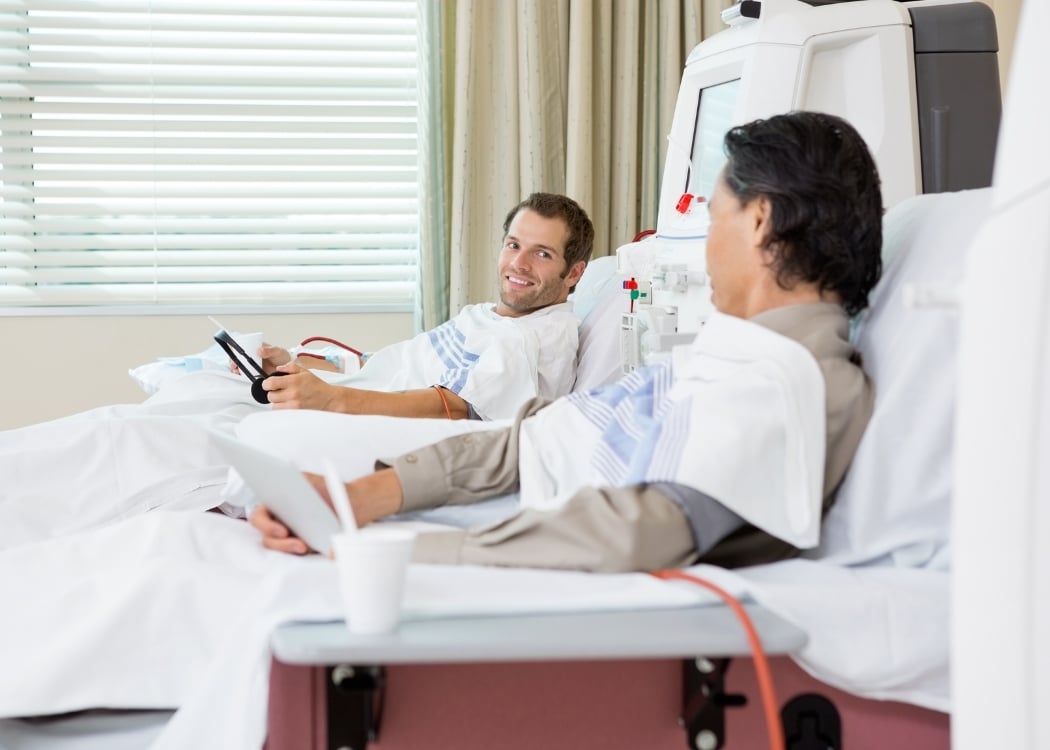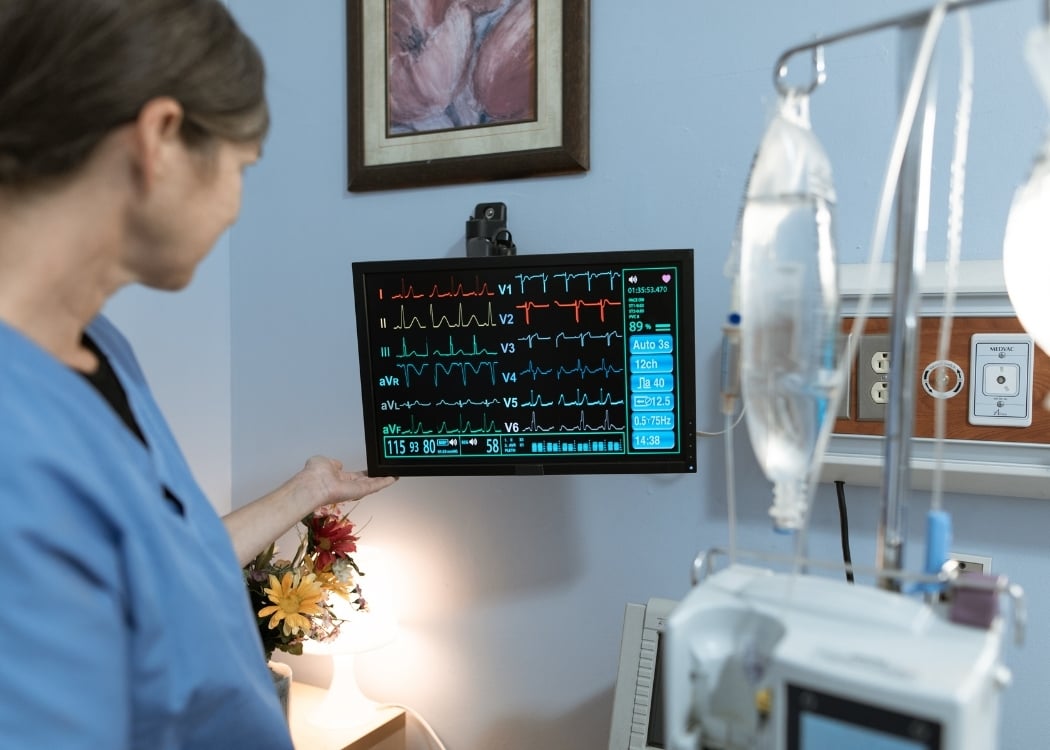Advanced Treatments
Advanced treatments in Istanbul combine modern technology with skilled teams for precise, less-invasive care. From robotic surgery and targeted therapies to Gamma Knife and high-resolution imaging, plans are clear and tailored to you. English-speaking support, fast scheduling, and transparent prices make the process simple for international patients.

This article explains what people mean by advanced treatments, how these options are organized in Istanbul for visiting patients, and what a safe, practical plan looks like from first message to follow up. The focus is clear language, humane planning, and steps you can actually take. You will see how technology supports care, but also how good outcomes still depend on experienced teams, solid protocols, and honest conversations.
What “advanced” really means. In daily medicine, advanced treatments are not magic tricks. They are proven methods that add precision, safety, or speed. Some are new devices. Some are better ways of using old tools. Some are medicines that target a narrow pathway in a disease. All of them have one job. They turn a complex problem into a series of dependable steps that a team can repeat, explain, and improve.
Scope and mindset
This is a practical guide, not a sales page. We will look at diagnostics, surgery, oncology, cardiology, neurology, orthopedics, eye care, and rehabilitation. We will keep the tone steady. We will show how advanced treatments fit into a week in Istanbul and how to choose a center without stress. We will also point out honest limits, because saying “not yet” is sometimes the safest kind of care.

How Istanbul organizes complex care
Scale and coordination set the rhythm. The city’s hospitals, university centers, and licensed outpatient facilities work together every day. International patient teams manage messaging, quotes, schedules, and translations. Diagnostics, pharmacy, operating rooms, and intensive care are usually on the same campus, which keeps transfers short and decisions fast. This is why many visitors describe advanced treatments in Istanbul as “organized” and “predictable” rather than “experimental.”
Diagnostics that make decisions clearer
High quality testing is the start of every plan. Modern MRI and CT systems, functional and perfusion imaging, digital mammography and tomosynthesis, and structured ultrasound programs support early and accurate diagnosis. Labs run comprehensive panels for infection, metabolism, hormones, and oncology markers. Genetic and molecular tests help select targeted medicines. In radiology and pathology, decision support software can flag patterns for the clinician to review. The point is not to replace doctors. The point is to reduce blind spots so advanced treatments are offered to the right person at the right time.
What this means for you. Expect a plan that starts with the question “what do we need to know before we act.” Expect your team to order only tests that change the decision. Expect results explained in plain language, with copies you can take home. This careful front end protects the quality of everything that comes next.
Surgery with more precision and less trauma
Robotic platforms and navigation help skilled hands do safer work. In general surgery, urology, gynecology, and thoracic surgery, robotic systems and refined laparoscopic tools allow high quality work through small incisions. In neurosurgery and ENT, neuronavigation and intraoperative monitoring guide surgeons through critical areas with fewer surprises. In orthopedics, three dimensional planning and patient specific guides improve alignment and fit. These are not gimmicks. They are ways to make complex steps reproducible so advanced treatments are not only “high tech” but also “highly consistent.”
What you might notice as a patient. Smaller incisions, less pain, earlier walking, and a clear timeline for going home. You will also notice the quiet choreography of a team that has done the same sequence many times. Good technology removes noise, but people make the day feel calm.

Oncology and the move toward precision
Modern cancer care aligns diagnosis with targeted action. Surgical teams aim for complete and safe removal of disease when possible, supported by pathology that includes molecular markers. Medical oncology uses targeted therapies and immunotherapy when your tumor’s profile supports benefit. Radiation teams plan with image guidance and deliver precise doses through conformal methods that protect healthy tissue. These are the core pillars of advanced treatments in cancer. They are not delivered in isolation. They live inside tumor boards where specialists choose a path together and explain that path in simple terms.
What this means for timelines. You may spend the first days on staging scans and blood work, then meet a combined team to set order and dates. Expect one clear document that says what happens first, what comes next, and when checks occur. Expect a human explanation of side effects and what to do if you feel unwell at night.
Cardiology and structural heart options
Heart care has become less invasive for many patients. Catheter based therapy for rhythm disorders and structural problems allows treatment through small access sites. Teams use advanced imaging to plan and guide each step. In the right cases, this reduces hospital nights and speeds return to normal activity. These are good examples of advanced treatments that improve quality of life not because they are flashy, but because they are thoughtfully designed for the way people actually heal.

Neurology, neurosurgery, and function
Movement disorders and epilepsy care illustrate the power of a careful pathway. Deep brain stimulation for selected Parkinson’s disease and surgical evaluation for drug resistant epilepsy are options in well organized programs. The work begins with scoring, monitoring, and imaging. Candidacy is defined with care. Surgery is guided by navigation and modern anesthesia. Programming and follow up are planned long before the day of the procedure. Patients remember the technology, but they also remember that someone called the next day to ask how sleep and speech and walking felt. This is the human side of advanced treatments.
Eye care and microscopic precision
Vision care is a place where “advanced” is visible. Laser platforms for refractive surgery, modern cataract systems, premium lenses, corneal cross linking, and intravitreal therapies for retinal disease are now routine in high volume centers. The most useful innovation for patients is not the device. It is the structured screening and the honest “no” when eyes do not match a safe profile. That is how advanced treatments protect outcomes over the long term.
Orthopedics, sports medicine, and recovery
Planning and rehab are as important as the procedure. Arthroscopy for the shoulder, knee, and ankle, computer assisted joint replacement, and focused pain control protocols help people move sooner and safer. Three dimensional planning improves fit and alignment. Enhanced recovery pathways set realistic goals for the first forty eight hours. You will leave with a written program and phone numbers that answer, which makes these advanced treatments feel safe even after you return to your hotel.

Regenerative ideas, and a reality check
Some cell and tissue ideas are real and regulated. Some are still research. Standard uses exist in blood and marrow transplantation and a few niche areas. Many advertised injections for many unrelated conditions remain unproven. A good center will tell you which advanced treatments are approved for your diagnosis, which are in proper trials, and which are simply not ready. That honesty builds trust and protects your time and money.
The perioperative layer that keeps care safe
Modern anesthesia, infection control, and intensive care are part of the story. Drug choices are tailored to your health. Airway plans and monitoring are spelled out. Antibiotic timing and device sterilization follow checklists. After surgery, monitored beds and neuro or cardiac intensive care are available when risk is higher. These steps do not make headlines, yet they turn advanced treatments into safe treatments.
Digital records and remote follow up
Information travels with you. Hospitals and clinics issue reports in English on request and store images in shareable formats. Many teams schedule a video check after you return home. When a dose needs an adjustment or a dressing needs a change, you are not left to guess. This is where the digital layer makes advanced treatments feel human again. You are seen, even when you are far away.

How many days to plan
Time on the ground depends on the task. Diagnostic workups can fit into two or three calm days if your records are complete. Day case surgery usually needs three to five days so checks are not rushed. Larger procedures can take a week or more, with a brief hotel stay after discharge. Oncology and neurology programs set timelines around cycles and programming visits. Build one buffer day into any plan. Advanced treatments deserve unhurried recovery and clear checks before you fly.
Choosing a center without stress
Ask for a named specialist and a written plan. Your document should list tests, the proposed intervention, anesthesia, expected nights, medications, and aftercare. It should say what is included and what is not. It should explain who to call at night. Read the tone of the answers. Calm, exact replies are a good sign. This is true for every field that offers advanced treatments.
Costs and insurance
Clarity beats guesswork. Ask for an itemized quote and a simple payment plan. Some insurers can work directly with major hospitals if they issue a guarantee. Many visitors pay by card and claim later with a detailed invoice and medical reports. Keep copies in your phone and in your bag. Good records make advanced treatments easier to explain to your home doctor and your insurer.

Comfort, food, and gentle tourism
Recovery days should be quiet and kind. Stay close to your center for the first forty eight to seventy two hours. Drink water. Eat light food that is easy to digest. Take short walks in flat areas and rest often. Soft city moments help healing. A window seat on a ferry, a shaded bench in a park, a single museum gallery, tea at sunset. This is how you hold energy while you benefit from advanced treatments.
Ethics, consent, and honest limits
Responsible teams favor clear consent over flashy promises. You should hear about risks, alternatives, expected results, and what happens if plans change for safety. You should feel free to ask for a second opinion and to bring a companion to your consult. You should see that communication rules are followed and privacy is respected. In the long run, this steady approach is what keeps advanced treatments trustworthy.
What success feels like
Success is not only a good scan or a neat scar. Success is a week that felt planned, a pain plan that worked, a clear call schedule, and a file you can share at home. Success is a team that answered your questions with patience. Success is a city that held you gently while you healed. That is the experience many people look for when they choose advanced treatments in Istanbul.
A simple closing thought
Choose people first, then tools. Technology is important, but it serves the plan. Pick a team that treats your condition every week, that writes details in plain words, and that gives you room to decide. When those pieces fit, advanced treatments stop feeling intimidating and start feeling like the most natural next step in your health story.
References
- World Health Organization. Global strategy on digital health and responsible use of health data. Policy guidance on how technology supports clinical decisions and continuity of care.
- Joint Commission International. Public directory for verifying hospital and ambulatory accreditation status for international patients.
- European Society for Medical Oncology. Clinical practice resources on precision oncology, including the role of molecular profiling and targeted therapies.
- American Society of Clinical Oncology. Patient and clinician guides to immunotherapy and targeted treatments with indications and expected side effects.
- European Association of Neurosurgical Societies and Congress of Neurological Surgeons. Guidance on neuronavigation, intraoperative monitoring, and perioperative safety in brain and spine surgery.
- Society of Thoracic Surgeons and related surgical societies. Statements on minimally invasive and robotic approaches in thoracic and general surgery, including outcomes and patient selection.
- European Society of Cardiology and Heart Rhythm Society. Recommendations on structural heart interventions and catheter based electrophysiology procedures.
- American Academy of Ophthalmology. Overviews on refractive surgery candidacy, cataract surgery with premium intraocular lenses, corneal cross linking, and intravitreal therapy protocols.
- European Society for Radiotherapy and Oncology. Position statements on image guided radiotherapy, stereotactic body radiotherapy, and safety frameworks for precision dosing.
- International Society for Stem Cell Research. Guidelines on responsible translation of cell based therapies, including distinctions between approved care and research settings.
- International Organization for Standardization. ISO standards relevant to medical laboratories and quality management in diagnostic services.
- Centers for Disease Control and Prevention and national emergency health resources. Practical guidance on patient safety, informed consent, and communication for people receiving care abroad.



